Wildlife Needs Groundwater Too
In an arid region of Oregon, groundwater pumping imperils the “Everglades of the West”
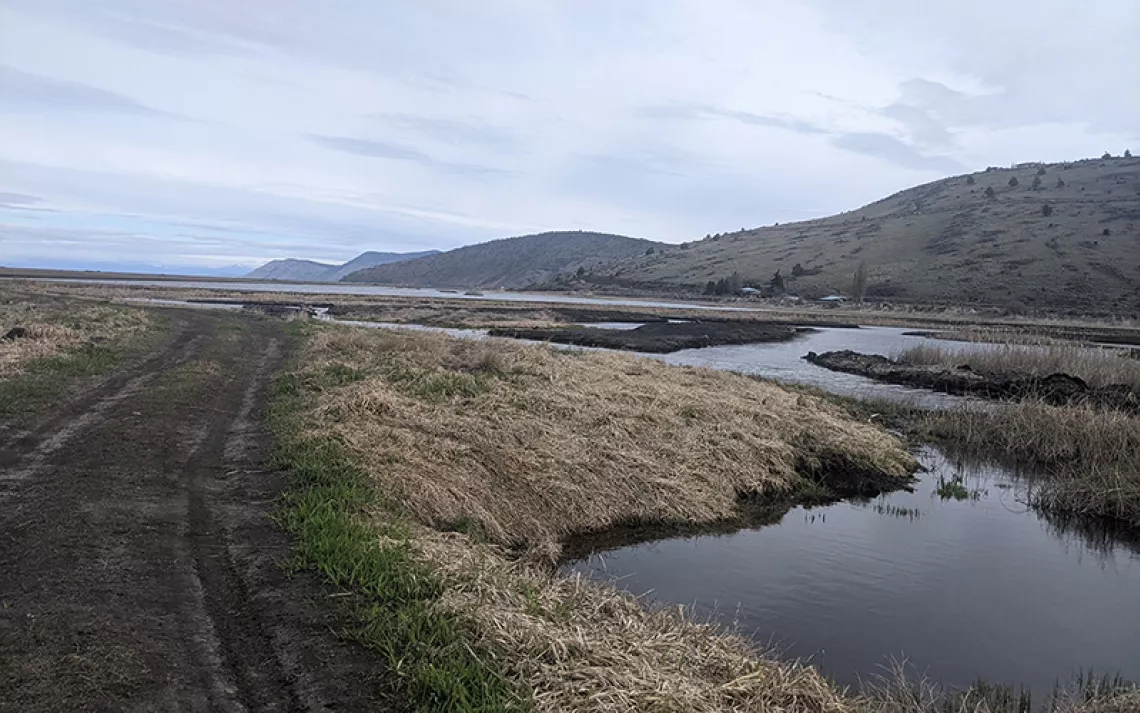
Photos by Isobel Whitcomb
On Klamath Marsh, a lone sandhill crane stretches its neck skyward and lets out a rattling cry. The only response it receives is its own echo, bouncing off the evergreen foothills on the horizon. The bird bobs its red-capped head as it picks its way deliberately across the otherwise empty—and totally dry—golden fields. It’s late March, and millions of birds are making their journeys north for the summer. Normally, an estimated 80 percent of species would be beginning to stop here and at neighboring wildlife refuges in the Klamath Basin to rest and refuel about now. But on this cloudless day, Klamath Marsh National Wildlife Refuge doesn’t look like a lush avian sanctuary. It is indistinguishable from the cattle ranches that surround it.
“This was an absolute gemstone of biological diversity in the West,” said Alex Gonyaw, the biologist for the Klamath Tribes native to these lands. “[Now] it’s the bare threads of a tapestry.”
Eastern Oregon’s Upper Klamath Basin is naturally arid. Lacking the lush temperate rainforests of the coastal range or Portland’s constant drizzle, this region is a desert—like Los Angeles, it receives fewer than 15 inches of rainfall each year. Klamath Marsh National Wildlife Refuge wouldn’t exist if it weren’t for rivers of water that course under the ground and seep up through springs. But amid decades of drought, which has only intensified in recent years, this groundwater is a hot commodity for the alfalfa, barley, and potato farms that stretch across the basin. Just a few hundred meters from the boundary of Klamath Marsh, on agricultural land indistinguishable from the parched wetland, groundwater pumps line the roadside, ready to intercept snowmelt as it flows through the ground off distant white-capped peaks—snowmelt that would otherwise feed the marsh. In competition with agriculture, wildlife is losing.
*
Klamath Marsh National Wildlife Refuge is a mere fragment of what used to be a 5.6-million-acre network of lakes and wetlands—the largest west of the Mississippi. Millions of years ago, volcanoes formed this landscape, burying the basin in thousands of feet of rock and ash. Over millions of years, rainwater and snowmelt trickled down through cracks in the volcanic material, filling it up like a sponge until the ground became totally saturated. Then, the water began to bubble up through springs and seeps. It carved river channels and flooded the low-lying areas, forming an extensive network of lakes and wetlands, forming what some called the “Everglades of the West.” Fish were once so abundant here that the Klamath people native to the basin could catch them with their bare hands. Vast herds of elk and deer roamed the meadows. Hundreds of thousands of white pelicans alighted on the marshes, among golden wocus, a water lily that the Klamath people harvest for its seed pods. “Anywhere there was flat, low-lying ground, there were wet meadows or open wetland,” Gonyaw said. “Endless water.”
Much of those wetlands are now gone—drained by the Bureau of Reclamation beginning in the 1910s to make way for agriculture—but Klamath Marsh National Wildlife Refuge remains a vital ecosystem. Without it, countless birds might not survive the arduous journey south. The Klamath people still gather wocus there. It feeds the rivers that flow into Upper Klamath Lake with water filtered by the plants and microbes that grow in the wetlands. But without access to plentiful groundwater, the refuge is in crisis.
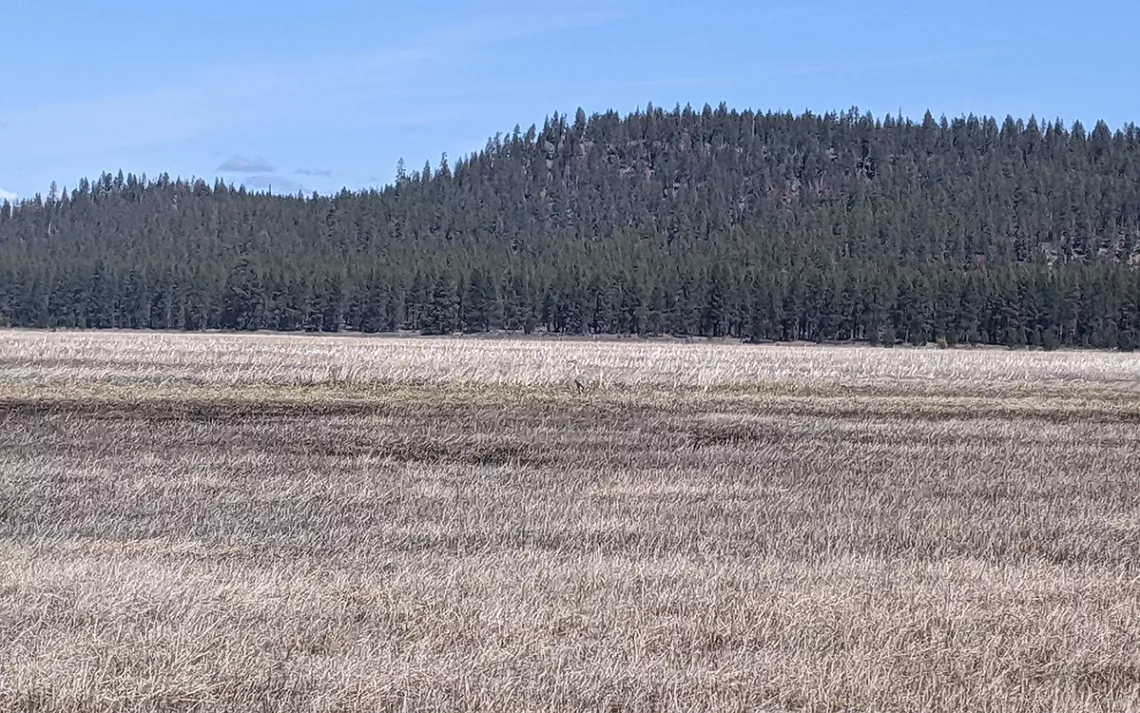
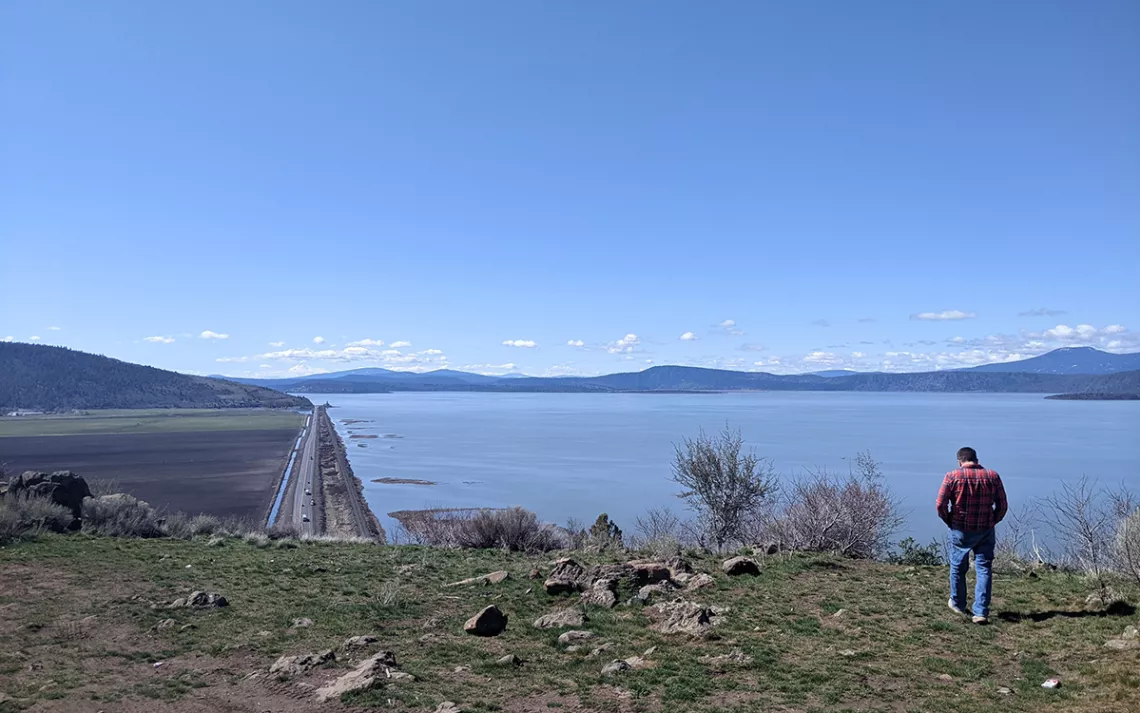
Groundwater wasn’t always so in demand in the Upper Klamath Basin. The preferred source of water for local farmers is Upper Klamath Lake, a 91,000-acre body of water about 40 miles to the south of Klamath Marsh National Wildlife Refuge. But in 1988, the C’waam and Koptu (Lost River sucker and short-nose sucker), two species of fish endemic to the lake and culturally vital to the Klamath tribes, were listed as endangered, restricting farmers’ access to the lake. Then in 2001, when drought took hold of the Klamath Basin, the Bureau of Reclamation came up with a workaround: To avoid using water from the lake, they would begin subsidizing groundwater development and extraction. Since then, groundwater pumping has increased threefold.
The policy has backfired, and Klamath Marsh is testament to that fact, said Alex Gonyaw. In incentivizing groundwater pumping, the Bureau of Reclamation completely ignored the geology of the basin, where gushing rivers spring fully formed out of the earth and slow seeps flood thousands of acres. Rather than seeing the water underground as an extension of the region’s lakes and wetlands, “they treat groundwater as separate from the surface,” Gonyaw said. For springs to run and wetlands to stay lush, a minimum threshold of water pressure in the aquifers underground is needed. As aquifers drop, marshes and wetlands like Klamath Marsh dry up.
Clay Dumont, a Council Member for the Klamath Tribes and a sociologist, has witnessed the transformation of the Upper Klamath basin since his childhood. “We would come out to the reservation, and my dad would say, ‘We’re going to get a deer,’ because it was that easy. They were everywhere. Massive herds that would throw dust in the air,” Dumont said. The number of birds was staggering—close to six million waterfowl in the 1960s, around the time that Dumont was a kid. Today, there are around 120,000. To see what those massive flocks have been reduced to is heartbreaking, Dumont said: “It’s all gone.”
It’s impossible to say exactly how much of this loss of habitat is due to groundwater pumping, as opposed to drought. “That is a big unknown,” Gonyaw said. But Gonyaw does know that Klamath Marsh should not be drying this quickly. In regions where rivers are fed by rain and snowmelt, rather than groundwater, drought has an immediate effect on surface water. But in otherwise healthy ecosystems, groundwater acts as a buffer—slowly releasing water into rivers and lakes at a steady rate, even as drought persists. Some scientists refer to groundwater-fed rivers and wetlands as “climate refugia,” meaning that they have the potential to escape the effects of climate change long into the future. Depending on the size of the aquifer, you could go anywhere from years to centuries before seeing a substantial change in the flow of a river, Gonyaw said. Sustainably managed groundwater has the potential to buy wildlife time as they adjust to a changing climate; runaway groundwater pumping is eroding that safety net.
*
Just down the road from Klamath Marsh National Wildlife Refuge, Gonyaw’s truck churns up rust-colored dust as it turns off the highway down a dirt road lined with spindly ponderosa pines. He stops abruptly where the road crosses a large culvert. About 15 feet below, boulders line a sunbaked gully. Prior to European settlement, water from Klamath Marsh flowed through this riverbed six months out of the year, forming the headwaters of the Middle Williamson River. Today, due to groundwater pumping combined with the historic conversion of wetlands to agricultural land, water now trickles through for just one or two months in early spring. This year, it’s not running at all.
The vast majority of rivers and wetlands in the Upper Klamath Basin all flow in one direction: toward Upper Klamath Lake. As groundwater and river levels drop, so do the lake’s water levels—further endangering the C’waam and Koptu, the very species that subsidized groundwater extraction was supposedly enacted to protect. Despite limits on surface-water extraction, the water flowing into Upper Klamath Lake continues to decrease in volume by 7,000-acre feet each year, according to Gonyaw’s calculations.
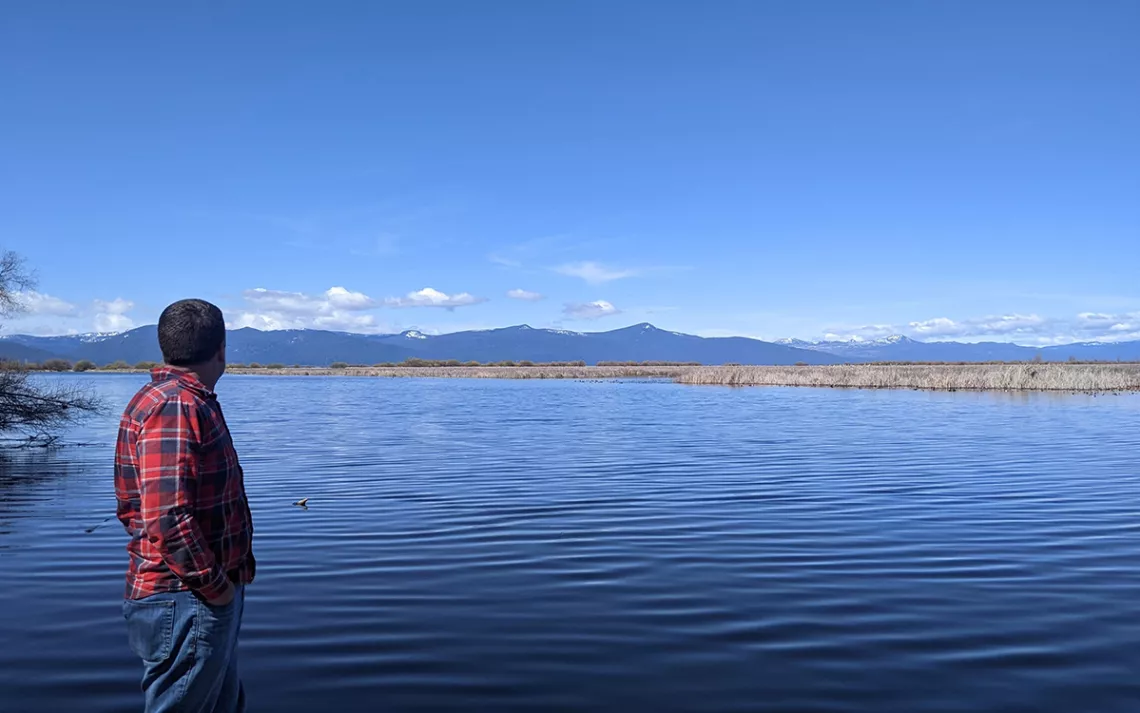
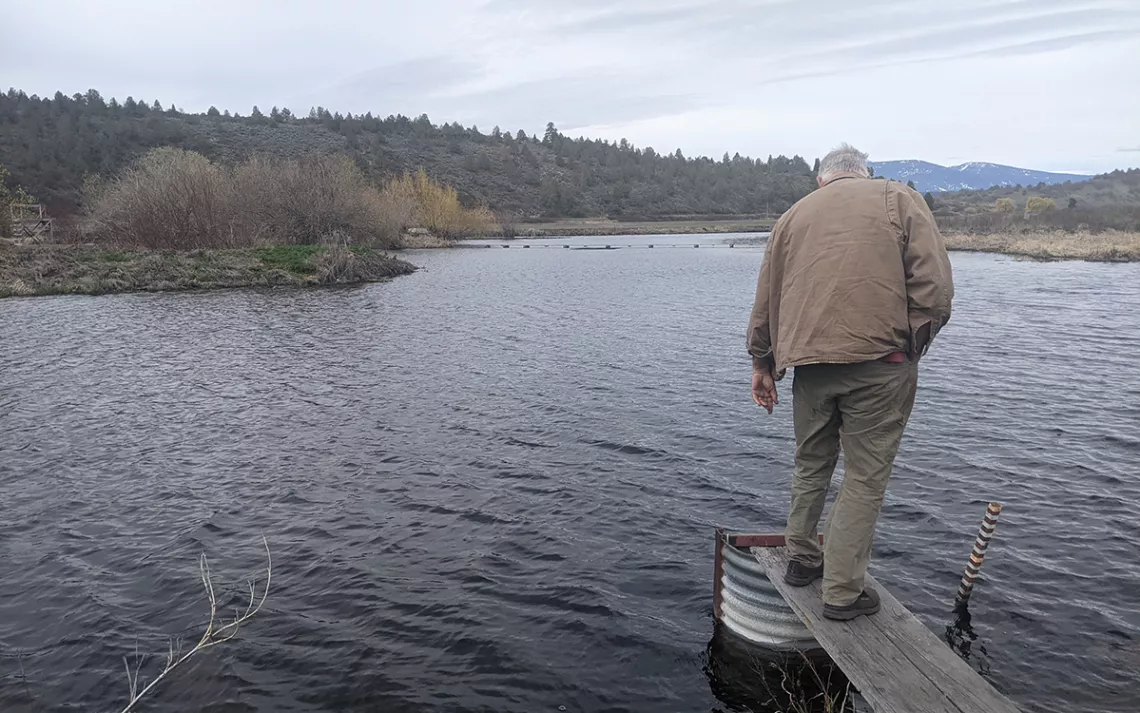
Steve Pedery, the conservation director of the nonprofit Oregon Wild, calls the state and federal government’s lax approach to groundwater an archetypal example of climate maladaptation—a concept that the Intergovernmental Panel on Climate Change cautioned about in its most recent report. “Governments around the world are responding to climate change by doing things that either make existing problems worse or try and solve one problem by spinning off three new ones in another direction,” Pedery said. “The Klamath should have been, you know, Exhibit A in that report.”
Karl Wenner, a farmer whose land abuts Upper Klamath Lake, believes that adaptation is possible—and that going about it the right way could bring back a balanced ecosystem. The sky is overcast, and the lake is slate gray as we trundle along a dirt jetty in a pickup so large I have to get a running start to hop into it. On our left-hand side, barley shoots poke through bare soil. On our right is a thriving wetland. Ducks explode from the water, quacking in alarm at the truck rumbling by. A juvenile bald eagle circles above groves of willows and bullrush. Early last year, Wenner created this wetland, flooding one of his fields to do so. Since then, he’s watched the wildlife flock to his land. But the artificial marsh doesn’t just provide habitat for these species. It’s an integral part of Wenner’s farm.
Wenner doesn’t pump groundwater or use fertilizer, and rarely waters his land throughout the summer. Instead, he relies on the region’s natural wetland ecology to keep his land moist and fertile. During the winter season, when the fields would normally lie fallow, two natural springs flood his land. Not only does this method saturate the soil with all the water it will need during the growing season, but also some of that water percolates down into the water table, recharging the underground aquifers that feed his spring. When it’s time to plant, Wenner releases that floodwater, rich with nitrogen and phosphorus from the peat that characterizes the soil, into this artificial wetland, where plants and microbes naturally scrub the water clean by munching on the nutrients.
Wenner believes that his method of farming brings his land back to an approximation of what it once looked like prior to European colonization. “It’s only 70 acres. It’s a tiny drop in the bucket. But imagine if we did this all over the place,” Wenner said. Birds aren’t the only wildlife that benefit from Wenner’s farm. In May, the Fish and Wildlife Service placed thousands of juvenile C’waam and Koptu onto his land in the hopes that the wetland would provide the sheltered environment the vulnerable baby fish needed to make it to adulthood. “You can’t go to the system you had, but you can make it rhyme,” Wenner said.
There are other methods of farming that work with the region’s naturally arid climate and don’t rely on local sources of springwater or direct access to the lake, which Wenner is in a fortunate and unusual position to have. One practice, called dryland farming, completely eliminates the need for irrigation. While most farmers sow their fields in the spring, dryland farming involves planting in the fall, just as the rainy season begins. With this method of planting, winter and early spring, rather than summer, is the growing season. Farmers in the nearby town of Bonanza, Oregon, have already had success with the method but Wenner’s first experiment with the method, this past winter, produced a weak crop.
While Wenner is hopeful for the future of agriculture in the Klamath Basin, he acknowledges that it can’t continue at its current scale. “There are too many straws in the aquifer. I don’t know what we’re going to do,” Wenner said. Some experts believe that it was misguided to start in the first place. “We have to acknowledge that we built a giant irrigation project in a desert,” Oregon Wild’s Pedery said. The first necessary step, according to Pedery, is for the Bureau of Reclamation to buy back farmers’ water rights, including groundwater rights. “The solution isn't to force people into bankruptcy. It’s to acknowledge the role of the government in creating this problem,” Pedery said. “No one faults the farmers for believing the Bureau of Reclamation when they said, you know, ‘Come to this basin and farm. You’ll have water forever.’”
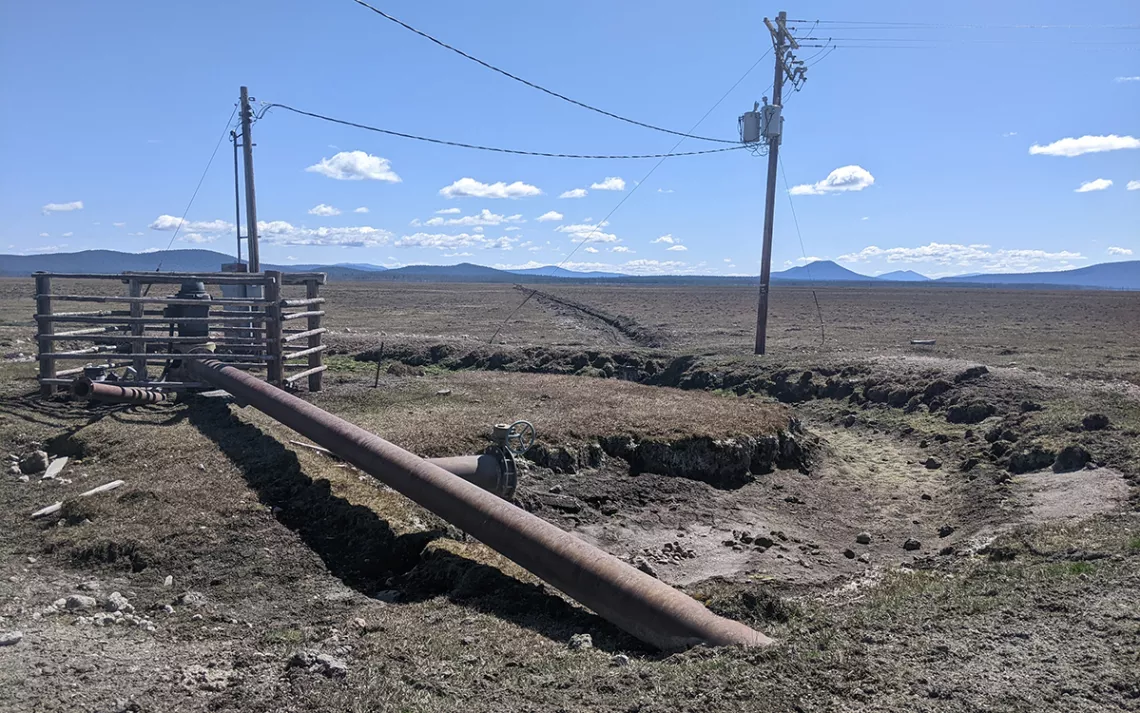
One such proposal was floated in 2002, a year into the decades-long drought. There was an effort to include in that year’s farm bill a voluntary program in which farmers could sell some of their water rights. Many farmers were in support of the idea, Pedery said, but economic interests in agriculture, such as tractor dealers, rallied opposition to the program and lobbied against it until it was struck down. “There was blowback in the farm community because landowners felt like the tractor dealer didn’t care if their family went bankrupt and lost their farm as long as somebody was farming,” Pedery said. So the groundwater extraction continued.
It’s not too late for the Upper Klamath Basin. This region evolved to withstand a harsh climate. White colonizers may have broken many of the systems that buffered the Klamath Basin against water scarcity, but unlike the drought, which we can’t magically disappear, it is possible to fix those systems. Earlier this year, the Klamath Tribes received a $20,000 grant from the Oregon Conservation and Recreation fund to restore wetlands by reintroducing beavers to the Upper Klamath Basin. In addition to myriad other benefits, Gonyaw hopes that this project will help recharge aquifers by slowing down surface water as it flows through dammed creeks and allowing the water to trickle down the water table.
The Wood River Wetland, where the Williamson River meets the Wood River, is a picture of what could be. Canada geese poke their heads out of golden wocus and swallows tumble overhead. The water extends as far as the deep blue foothills and jagged white-capped peaks on the horizon—the remnants of volcanoes that formed the aquifers keeping this region alive.
 The Magazine of The Sierra Club
The Magazine of The Sierra Club



